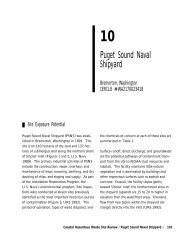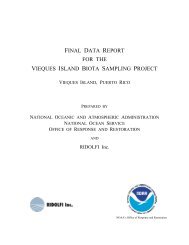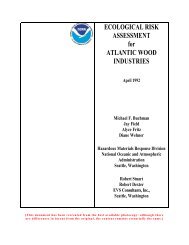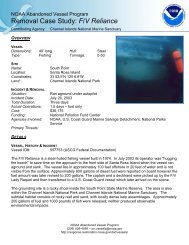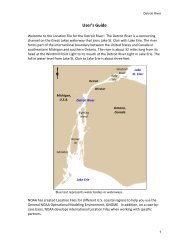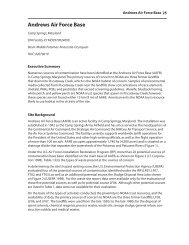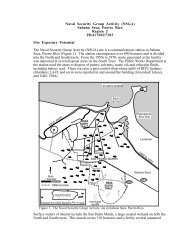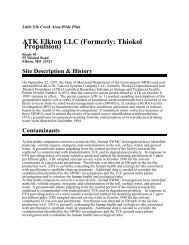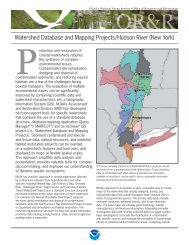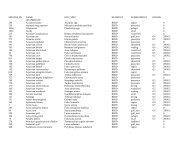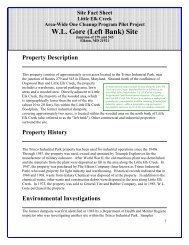Water Cycle Game - Instructions
Water Cycle Game - Instructions
Water Cycle Game - Instructions
- No tags were found...
Create successful ePaper yourself
Turn your PDF publications into a flip-book with our unique Google optimized e-Paper software.
For this extension, place containers with an equal number of black trackers atall stations except Animals and Plants. Place an empty container at the Plantand Animal stations. At the end of play, compare the number of pollutiontrackers each student has, plus the number left in containers at eachstation against the original number.For assessment, students can compare and contrast the effects thatmovement among different water compartments has on water quality.Extensions• To add an art element to this exercise, students can illustrate the stationlabels for the nine stations.• Have students explain how energy from the sun, gravity, geology, andgravity can affect the movement of water from various compartments. Forinstance, solar energy drives greater evaporation from the Red Sea than from the Bering Sea.• Have students identify whenever they need to change state to accomplish their instructed moves fromone compartment to another. Have them track how many state changes they go through.• Have students compare the movement of water during different seasons and at different locationsaround the globe. Have them suggest how the instruction die might be altered to better match conditionsfor a particular location and season.• To simulate the influence of heat on the movement of water, introduce the following addition afterseveral turns of play: have students stop where they are and ask them what would happen to water attheir station if it were hotter (generally, molecules move faster) or colder (molecules move slower). Havethem proceed with the game pretending that the water they represent is now hot (not boiling). Do thesame for water that is nearly frozen. You can even make distinctions for warm- and cold-bloodedanimals.• To illustrate how events can alter water quality, introduce pollution scenarios partway through thegame. For instance, have the students stop where they are and then read them a scenario card you havewritten. For example, an oil spill occurs. Or, a neighbor changes the oil in his car and dumps the used oildown the drain during a rain storm which then washes into a river. Several extra pollution trackerswould be collected in the appropriate stations under these situations.• For a math extension, explain to students they are assigned equally among stations to keep the exerciseflowing and to better illustrate the water cycle. However, if they were assigned to stations according tohow much water should be there, the numbers would not be even. Have them calculate how manystudents should be assigned to each compartment if that figure were proportional to the amount ofwater actually in that compartment. Use the following figures:Oceans – 79% Lakes and rivers – 0.002%Soil and Ground water – 18.8% Atmosphere – 0.0006%Ice – 1.2%Vocabulary and Concepts UsedEvaporationSublimationPercolationStates of matterPrecipitationTranspirationGround waterEffects of heat upon water movementReferences and ResourcesSome of this material has been adapted from the Project WET Curriculum and Activity Guide, 1995, Bozeman,MT.Garrels, R.M. et al. 1975. Chemical <strong>Cycle</strong>s in the Global Environment. William Kaufmann, Inc. 206 pp.



